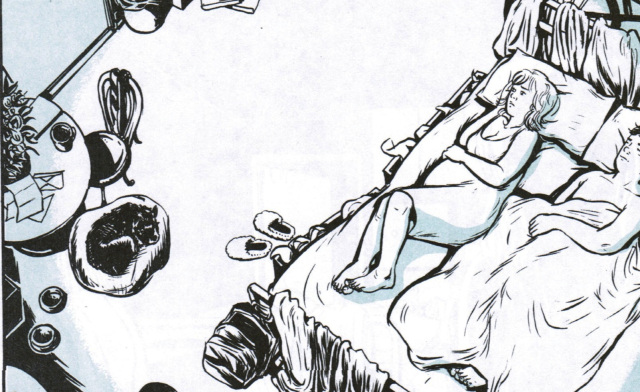Death, birth, rebirth

 This week I decided it was time for some light reading to shepherd me through the dreary days of winter, these endless months when all of us on the east coast with 9-5’s do. Not. See. The sun. And so as to not break my tradition of doing the exact opposite of what I intend to do, I read American Widow.
This week I decided it was time for some light reading to shepherd me through the dreary days of winter, these endless months when all of us on the east coast with 9-5’s do. Not. See. The sun. And so as to not break my tradition of doing the exact opposite of what I intend to do, I read American Widow.
American Widow is a graphic memoir written by Alissa Torres and illustrated by Sungyoon Choi. The book recounts Torres’s experience of the attacks on 9/11. The timeline is as stunning as it is seemingly fated. On September 10th, Eddie Torres left his 7 ½-month-pregnant wife at home and started his first day at Cantor Fitzgerald. The next day, he did the same thing. When the first plane entered the first tower, when the world stopped and believed if only for a moment that it was a terrible mistake, Eddie had just begun his second day of work in the North Tower. And in those moments it took the tragedy to unfold, for the terror to be confirmed, Alissa watched her careful plans crumble.
The book chronicles the next year of Torres’s life, up to the one-year anniversary of the attacks. This year, which begins with Alissa happily married and preparing to be a stay-at-home mom results in the saddest story I have ever read. Alissa is widowed, unemployed, and just about knocking on the delivery room door. Her husband’s remains stay missing for months. Her frustration with the utter disorganization of the aid groups is palpable and warranted. Torres’s process of accepting of Eddie’s death is perhaps harder to endure than the attacks. But in her acceptance is hope. This cycle of death, birth, and rebirth is a reminder of the one true thing about life: it goes on.
Somewhere between the national tragedy as the planes took down the twin towers and the birth of Alissa’s son, the attacks went from national to personal. This book is not an appeal to blind patriotism, a sort of we’re-all-in-this-together mentality. Because we weren’t all in it together, not even close. As Alissa, cast into the blanket category of “9/11 widow,” struggles to get aid and medical coverage for herself and her son, it’s easy to realize how much of us weren’t really touched by the attacks in the way Torres was. Most of us weren’t lost in a sea of paperwork when we desperately wanted to grieve. Most of us didn’t watch as national opinion turned and it became acceptable to do away with “handouts” to the victims’ families.
But we all remember it. We remember where we were when it happened. We remember wondering if more planes would hit more places. We remember the fear, even if we didn’t feel the pain. This collective memory gives everyone an in to Torres’s struggle, a point of understanding from which to begin.
The illustrations by Choi are simple, clean, and understated and all the more heartbreaking for it. There is something about the graphic format that makes tragic memoirs more palatable. The illustrations make the events visceral while also doing away with often cloying descriptions.
There are certain movies that I will recommend repeatedly though I have only personally watched them once. Movies that broke my heart and put it back together in a different way. Movies I can’t watch if I plan on keeping it together. This book is a lot like that. I suggest you read it. But just once and preferably alone. And then buy this book, if only to lend it.